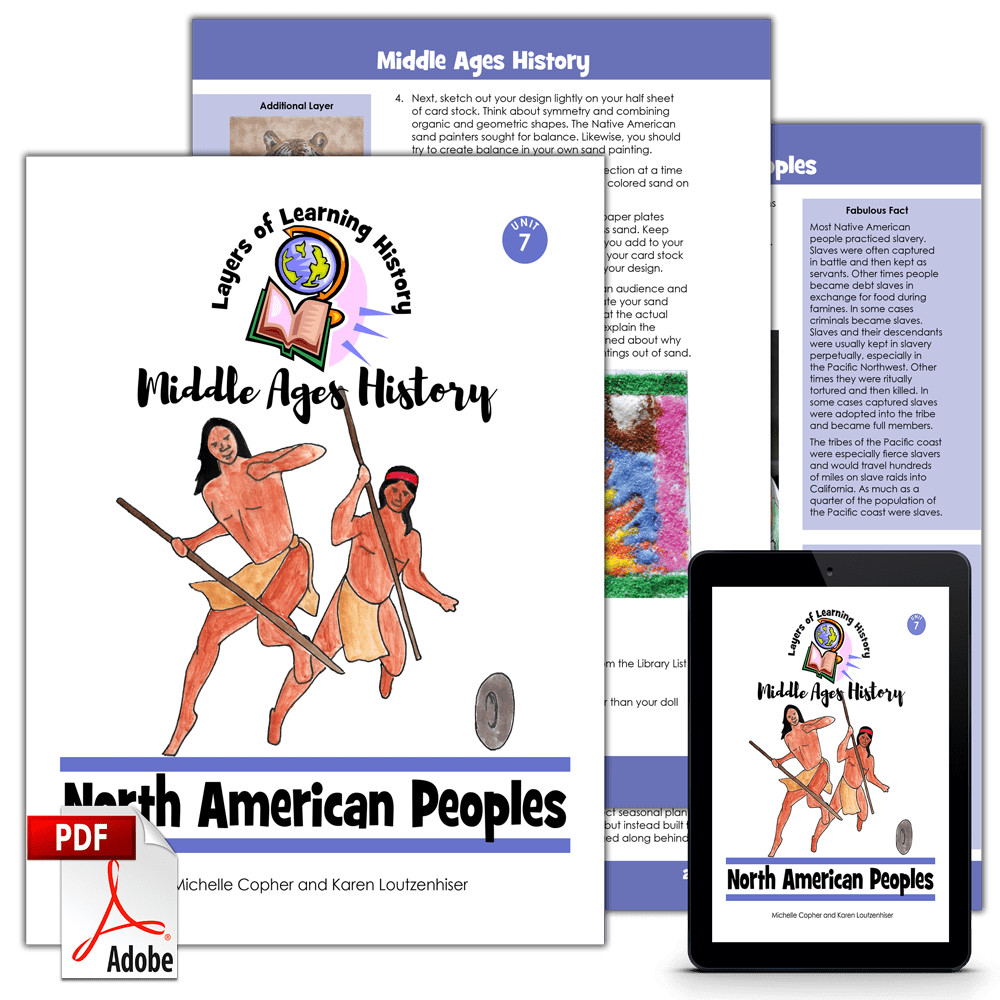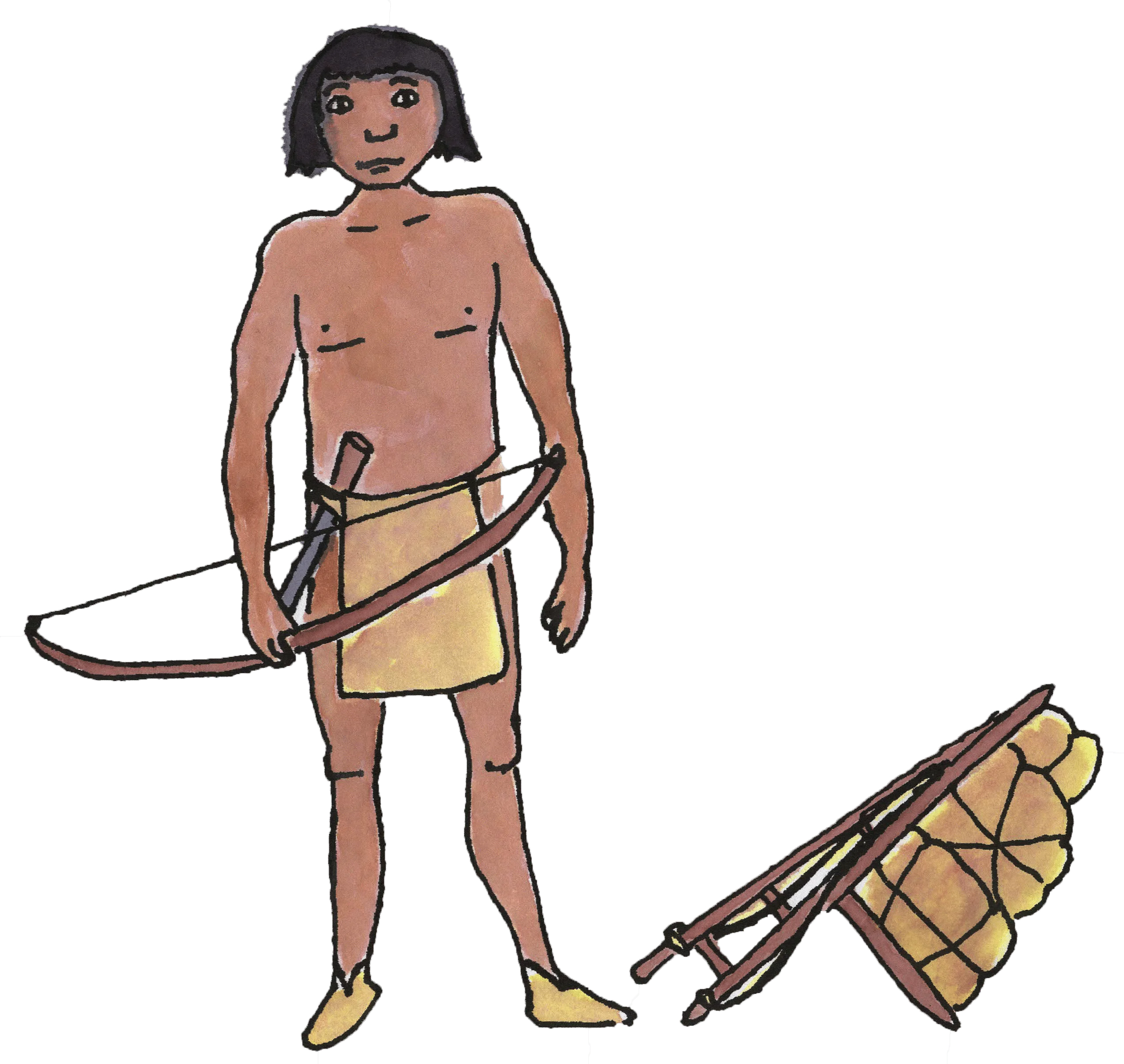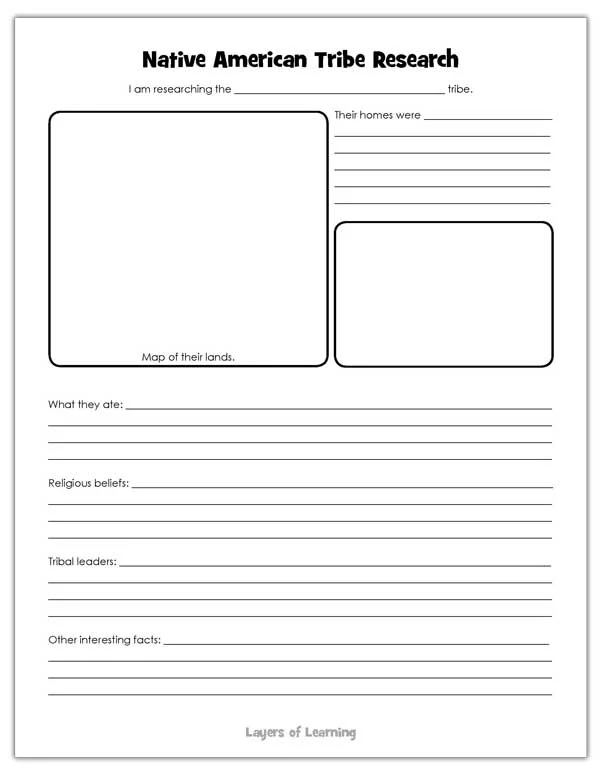This exploration is for all ages, as the colored smilies show. You can research the Northeast Woodland Tribes with your whole family together!




The Northeast Woodland Tribes research project is a history exploration from North American Peoples. Layers of Learning has hands-on experiments in every unit of this family-friendly curriculum. Learn more about Layers of Learning.
The Northeast Woodland tribes lived in wigwams or longhouses, hunted and fished, and grew crops like maize, beans, and melons. Some of the tribes were very warlike and others were more peace loving. The region of the Northeast Woodland Indians extended from the Great Lakes to the Atlantic Ocean and from Southern Canada to northern Virginia.
Within the Northeast Tribe region were many distinct tribes who spoke different languages, had different customs, wore different styles of clothing, and lived different lifestyles. There really is no way to study “Native Americans” as a whole group or even a region as a whole. Instead, choose a single tribe or confederation and study that one tribe in detail.

Step 1: Library Research
Before you begin exploring, read a book or two about a Northeast Woodland tribe.
We recommend reading short descriptions of several tribes and then picking one to do further research on. Once you have chosen your tribe head to the library and find information on that tribe (parents will want to check ahead of time and make sure that the library has a selection of books on various tribes to choose from). If you can’t find information at the library on the tribe you chose, ask the librarian for help. If they can’t get you the information you need, choose a different tribe. You can also find information about the tribes online.
Here are some suggestions of books we found for each level of learner. Check these or similar books out at your library by searching for the tribe you’ve chosen to investigate.
As Amazon affiliates, the recommended books and products below kick back a tiny percentage of your purchase to us. It doesn’t affect your cost and it helps us run our website. We thank you!

If You Lived With the Iroquois
by Ellen Levine

Step 2: Native American Tribe Project
You will need a Native American Tribe Research worksheet to take notes on. You will also need various craft materials like cardboard boxes, paint, beads, feathers, and so on for your children to make a project about the tribe they have studied.
As you read, look for information on the culture of the tribe. Take notes about the tribe on the worksheet or on plain paper.
Next have the kids use what they learned to create a project about their tribe. Pick something that is specific to your tribe. Maybe the tribe used a peace pipe or had a ceremony for the dead that interested you. Perhaps you are fascinated by their homes or how they fished. Create a project around something that interests you. Present your project to an audience.
Step 3: Show What You Know
Write a report or research paper about the tribe including information on each of the things listed in the worksheet.
Youngest kids up to fourth grade can complete one solid paragraph about the tribe, one sentence per topic on the worksheet with a good intro sentence and a good conclusion sentence.
Middle grades kids can complete a paragraph about each of the topics on the worksheet.
High school kids should expand their research to several books and write about three pages on the tribe they have chosen. High schoolers should also write a “works cited” page and cite sources in their papers.
Put a copy of your notes, your finished report, and a picture of your project in the history section of your notebook.
Additional Layers
Additional Layers are extra activities you can do or tangents you can take off on. You will find them in the sidebars of each Layers of Learning unit. They are optional, so just choose what interests you.
Additional Layer
The Powhatan were the confederation that lived where Jamestown was established.

Learn about relations between the natives and the settlers.
Additional Layer
Many people say that the government of the Iroquois tribes was the inspiration, at least in part, for the form the United States government eventually took.

Learn about the connection and see for yourself.
Famous Folks
Moncacht-Apé was a traveler and explorer from the Yazoo tribe in what is now Mississippi.

He walked from his home to the sea in what is now Maine, visited the Nigara Falls, then walked back home. A year later he set out again traveling west and ended up at the Pacific Ocean in Oregon and from there traveled north into Alaska, then walked back home again.
Learn more about him.
Get a Free Unit
Choose between the first unit in each Layers of Learning subject to try for free when you sign up for the newsletter.
We never spam and you can cancel your subscription at any time.






